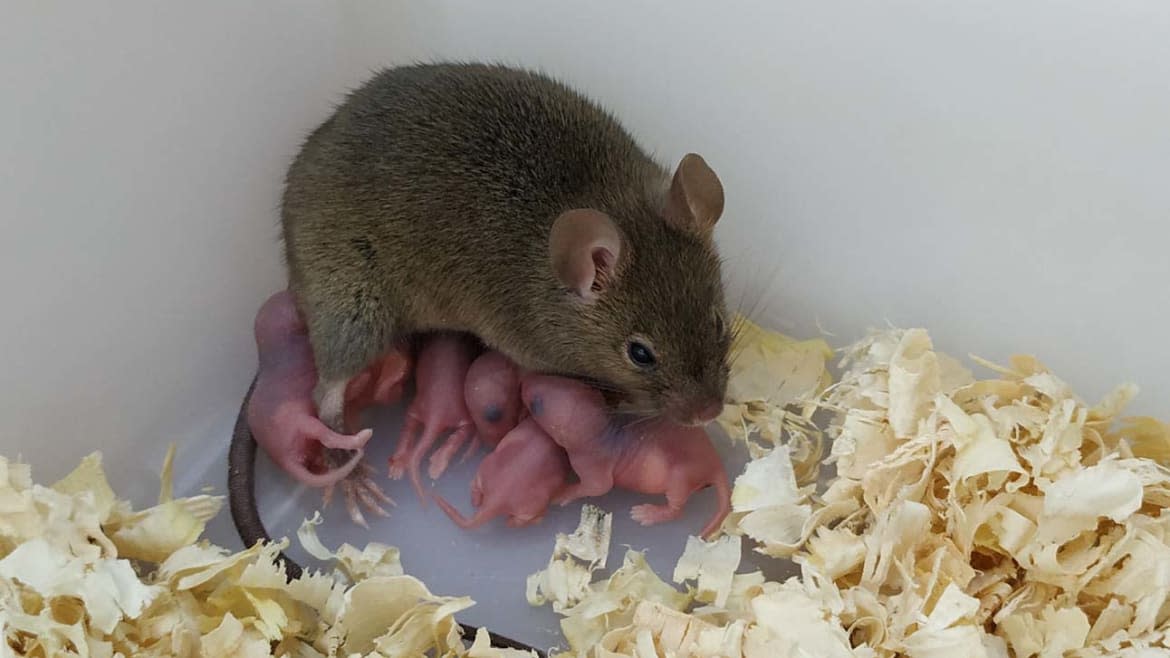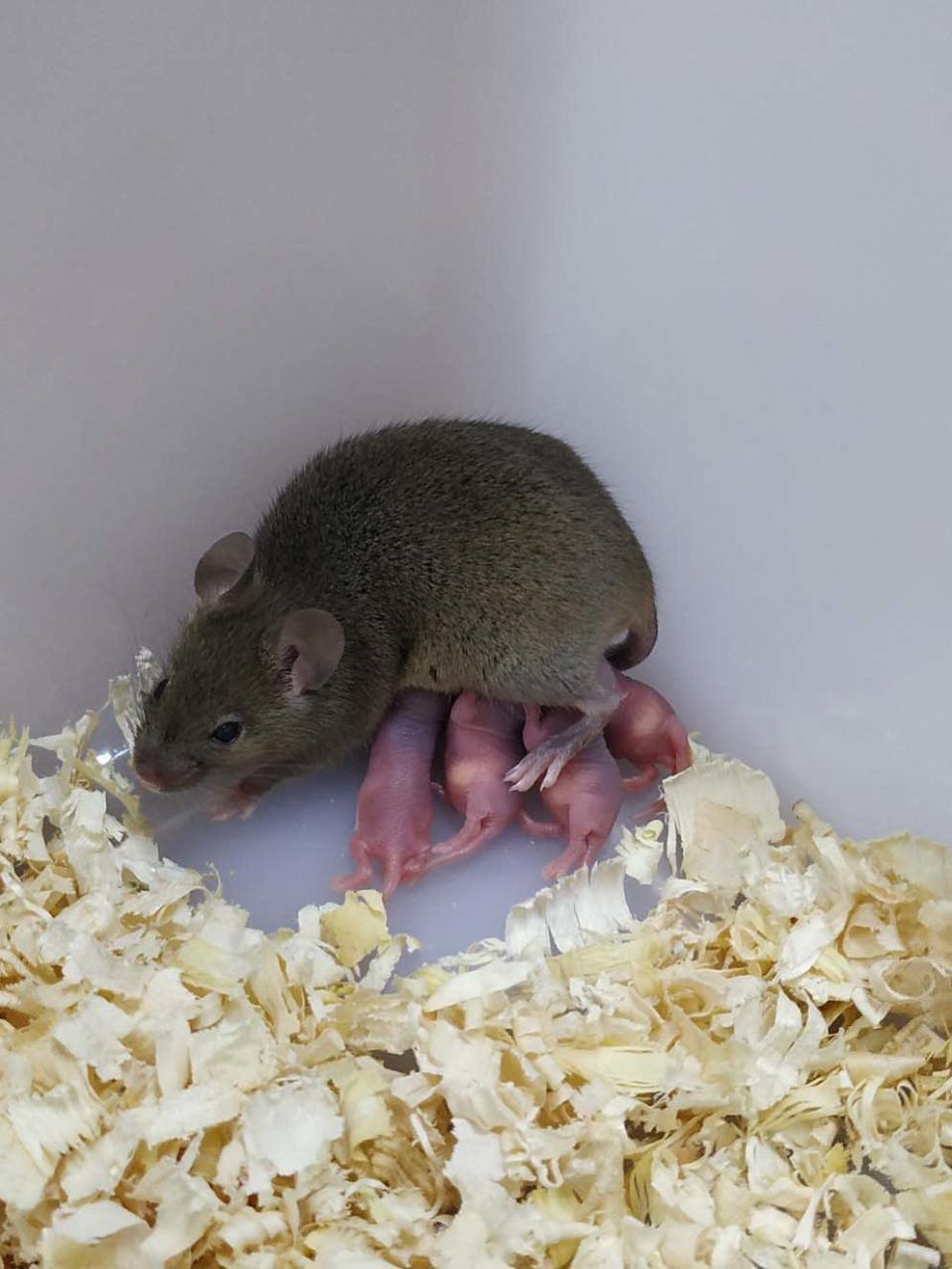A Virgin Mouse Gave Birth to a Litter of Baby Mice

The bible is no longer the only place where you’ll read testimonies about a virgin birth. In a new study published in the Proceedings of the National Academy of Sciences on Monday, researchers at Shanghai Jiao Tong University report the results of a new experiment where they were able to make a female mouse give birth to a baby mouse that grew from an unfertilized egg—something that has never before been accomplished in mammals. More than just a story of some eccentric scientists trying to play god, the new breakthrough may help us fully flesh out the role of genetics in regulating reproduction, and potentially provide insight into treating and even curing congenital diseases in people.
The seemingly miraculous process of immaculate conception—what scientists call parthenogenesis—isn’t actually all that rare in nature. While sexual reproduction requires the genetic union of an unfertilized egg and a single sperm, parthenogenesis is basically asexual reproduction: The egg grows into an embryo and later a full organism by replicating its cells, like a genetic copy-paste. The result is an offspring that is genetically identical to its parent—a clone.
In the wild, this form of reproduction is a common sight among invertebrates like worms and honey bees; and sometimes among vertebrates like sharks, California condors, and anacondas.
Scientists Who Created CRISPR ‘Genetic Scissors’ Share Nobel Chemistry Prize
But parthenogenesis isn’t natural for mammals, due to what’s called genomic imprinting. In imprinting, there are certain genes that are chemically tagged to indicate the parent-of-origin, much like a tag on a manila folder. The tagging silences these genes, ensuring that when fertilization occurs, an embryo can grow without a hitch. These imprinted genes also continue to influence an organism as it develops and grows into adulthood since the tagged gene determines which parental genetic contribution—whether mother or father—remains active.
Scientists have long been interested in modifying these chemical tags to circumvent genomic imprinting. In 2004, a team from Japan got close by fusing two eggs from two different genetically altered female mice. The chemical tags of one of these eggs were modified to make it seem like a male cell. The nucleus of this egg was then transferred into a regular egg. A female mouse was born just a few weeks later and later gave birth to a litter of her own.
Instead of going down the two moms route, the researchers at Shanghai Jiao Tong University used CRISPR, the gene-editing tool, to remove chemical tags on seven regions known to be imprinted on the mouse genome. They did this for 220 unfertilized mouse eggs, and successfully transferred around 190 of those embryos into foster mice moms.

The parthenogenetic mouse and the offspring. The parthenogenetic mouse exhibited normal reproductive performance as an adult.
Despite these impressive numbers, only three mouse pups were born, and only one survived. It’s a testament to the difficulties in chemically modifying DNA in the lab and generating viable offspring, Louis Lefebvre, a molecular biologist at the University of British Columbia, who was not involved in the study, told The Daily Beast.
“It’s pretty cool but, it’s nothing not to be expected in terms of what we’ve learned about how reproduction works and the genetic control of reproduction,” Lefebvre said. “It’s a tour de force in some way that [the researchers] really had to work hard in order to get it to work.”
Lefebvre and Marisa Bartolomei, a molecular biologist at the University of Pennsylvania, said that while creating these parthenogenetic mice might advance research into understanding how these genomic imprints lockdown reproduction and embryonic development, it’s a science unlikely to change up how humans reproduce.
“I think there are people who will look at this and say, ‘Oh, is this going to replace reproduction? Get rid of men?’ No, it’s not,” Bartolomei, who also was not involved in the study, told The Daily Beast.
CRISPR Gene-Editing Tool Used to Eliminate HIV From Mice
But what the new study may do is help scientists study a family of congenital diseases caused by genomic imprinting, like Prader-Willi syndrome (where children are born with a constant sense of hunger and developmental issues), or Beckwith-Wiedemann syndrome (a disorder that is characterized by a childhood risk for cancer).
“One could say we have the ability to modify these [genomic imprinting] defects using such techniques,” said Lefebrve, adding that what the study’s researchers have established is a proof-of-concept other scientists can potentially explore as the technology for modifying the specific chemical tags at fault on an individual’s DNA improves.
Until then, parthenogenetic mice will probably be filed under cool, but wacky science.
Got a tip? Send it to The Daily Beast here
Get the Daily Beast's biggest scoops and scandals delivered right to your inbox. Sign up now.
Stay informed and gain unlimited access to the Daily Beast's unmatched reporting. Subscribe now.

